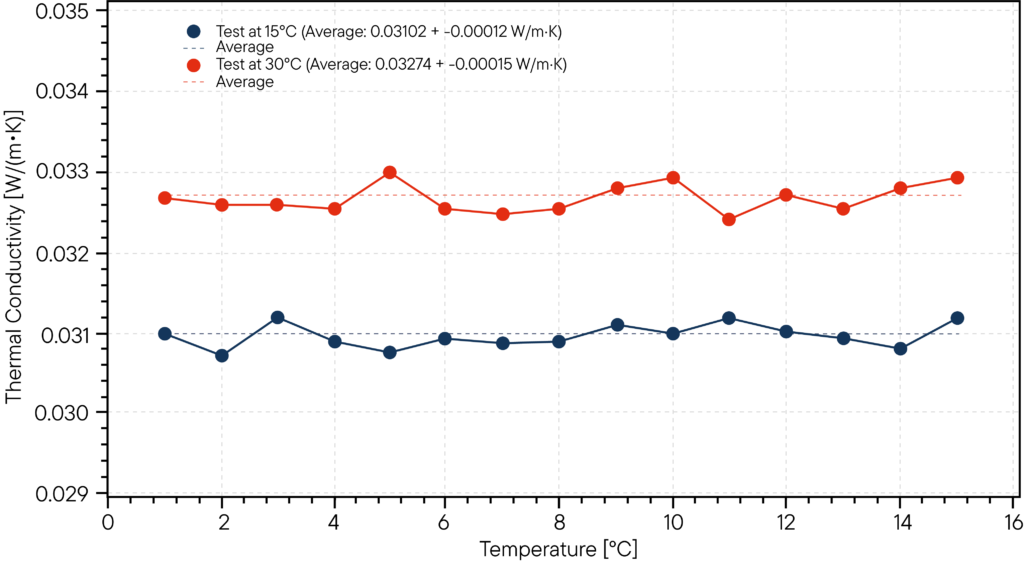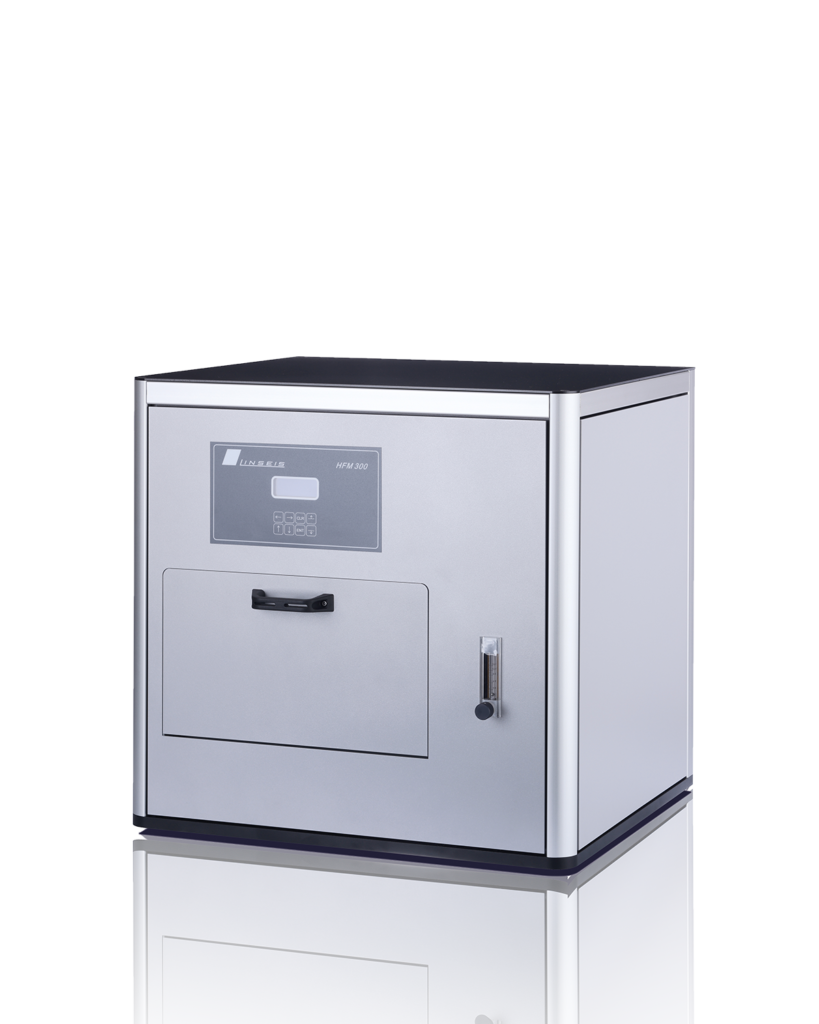Glasses are a very unique kind of material. They usually exist as an amorphous solid, which means they are a non-crystalline material that is not liquid at all, because their molecules are in a fixed, but non-crystalline structure.
In consequence they have some unique properties, which are their transparency and their considerable low degree of thermal expansion, and low thermal expansion coefficient (CTE).
Even if it seems logical that they might have a low melting point due to their amorphous nature, they keep their mechanical properties up to a quite high temperature, making them an ideal construction material since the early beginning of human cultures.
Of course, nowadays there are many different glasses available, each one providing its own special properties for its application purpose. Therefore, it is important to know the exact behavior of each species.

The Graph shows 15 measurements of the Fiberglass IRMM-440 certified reference material (Resin bonded glass fiber-board) with a thermal conductivity of 0.03274 +-0.00015 at 30°C and 0.03102 +/- 0.00012 W/m·K at 15°C. All 15 single measurements resulted in a very narrow range, proving the excellent reproducubility of the Linseis HFM L57.

